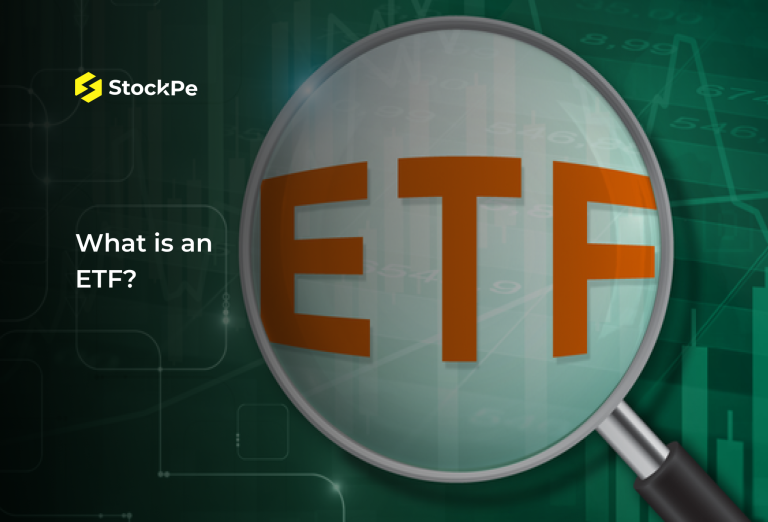Investing your money wisely can be a great way to grow your wealth and secure your financial future. However, with so many investment options available, it can be challenging to know where to start. Here are five tips to help you invest your money wisely.

Establish your investment goals
Before you begin investing, it’s essential to identify your investment goals. What are you investing for? Are you looking to grow your wealth over the long term, or do you have a specific short-term financial goal in mind, such as saving for a down payment on a house or a child’s education?
Your investment goals will inform the type of investments you choose and your investment time horizon. For example, if you’re investing for the long term, you may choose to invest in stocks or stock mutual funds. However, if you’re investing for a short-term goal, you may choose to invest in a low-risk investment, such as a savings account or a CD.
Determine your risk tolerance
Another critical factor to consider when investing is your risk tolerance. Your risk tolerance refers to the level of risk you’re willing to take on in pursuit of higher returns. Generally, the higher the level of risk, the higher the potential return. However, higher risk also means a greater chance of losing money.
To determine your risk tolerance, ask yourself how much money you’re willing to lose and how much risk you’re willing to take on in pursuit of higher returns. Your risk tolerance will inform the type of investments you choose, such as stocks or bonds. If you’re risk-averse, you may choose to invest in lower-risk investments, such as bond funds or index funds.
Diversify your portfolio
Diversification is one of the most critical principles of investing. Diversification means spreading your investments across different asset classes, such as stocks, bonds, and cash, and different industries or sectors. By diversifying your portfolio, you can minimize the risk of losing money and maximize your returns over the long term.
One of the easiest ways to diversify your portfolio is by investing in mutual funds or exchange-traded funds (ETFs). Mutual funds and ETFs invest in a basket of securities, providing instant diversification. For example, an S&P 500 index fund invests in the 500 largest companies in the United States, providing exposure to a broad range of industries and sectors.
Choose low-cost investment options
Investment costs can eat into your returns over time, so it’s essential to choose low-cost investment options. When selecting an investment, pay attention to the fees and expenses associated with the investment.
For example, mutual funds and ETFs charge an expense ratio, which is the annual fee the fund charges to manage your money. Look for mutual funds and ETFs with low expense ratios to keep your costs low.
It’s also essential to be aware of other fees associated with your investments, such as transaction fees or account maintenance fees. Avoid investments with high fees that can erode your returns over time.
Keep your emotions in check
Investing can be an emotional rollercoaster, and it’s essential to keep your emotions in check. When the stock market is down, it’s easy to panic and sell your investments, but this can be a costly mistake. Selling your investments during a downturn locks in your losses, and you may miss out on the market’s eventual recovery.
On the other hand, when the stock market is up, it’s easy to get greedy and invest more money than you can afford to lose. It’s important to stay disciplined and stick to your investment plan, even when the market is volatile.
To keep your emotions in check, establish an investment plan and stick to it. Avoid making impulsive investment decisions based on short-term market movements.
What is Money Market?
Money market consists of various financial firms, who borrow or trade in short-term loans.
Why Stock Market is better than Money Market?
Firstly, the stock market offers the potential for higher returns than the money market. While the money market typically offers low-risk, low-return investments such as savings accounts and money market funds, the stock market offers the potential for higher returns by investing in individual stocks or stock funds.
Secondly, investing in the stock market can help investors beat inflation over the long term. While the money market may offer stable returns that keep pace with inflation, they may not always beat it. In contrast, stocks have historically offered returns that have outpaced inflation over the long term.
Thirdly, the stock market offers a wider range of investment options compared to the money market. Investors can choose from a variety of asset classes, such as technology, healthcare, energy, and more. This allows investors to diversify their portfolio and spread their risk across different sectors of the economy.
Lastly, the stock market can provide investors with an opportunity to participate in the growth of the economy. When companies are performing well, their stock prices tend to rise. As such, investors can benefit from the growth of these companies and the broader economy.
Of course, investing in the stock market also comes with its own risks. Stock prices can be volatile, and individual stocks can go bankrupt or underperform. As such, investors need to carefully consider their risk tolerance and investment goals before investing in the stock market.
Investment Options:
Investment options are the various types of financial instruments available to investors. Here are some popular investment options:
Stocks –
Stocks are ownership shares in a company. Investors who buy stocks hope to profit from an increase in the value of the stock over time. However, stocks can also be volatile and carry risks.
Bonds –
Bonds are debt securities issued by companies or governments. Investors who buy bonds are essentially lending money to the issuer and earning interest in return. Bonds are generally considered to be less risky than stocks.
Mutual funds –
Mutual funds are investment vehicles that pool money from multiple investors to invest in a diversified portfolio of stocks, bonds, or other securities. The funds offer investors access to a professionally managed portfolio, but also come with fees and expenses.
Exchange-traded funds (ETFs) –
ETFs are similar to mutual funds, but trade like individual stocks on a stock exchange. They offer investors exposure to a diversified portfolio of stocks, bonds, or other securities, with lower fees than mutual funds.
Real estate –
Investments in real estate can include purchasing rental properties, investing in real estate investment trusts (REITs), or crowdfunding real estate projects. Real estate investments offer the potential for long-term appreciation and rental income, but can also be illiquid and require significant capital.
Alternative investments –
Alternative investments can include commodities, hedge funds, private equity, and more. These investments can be complex and typically require high minimum investments, but offer the potential for high returns and diversification.
Investors should carefully consider their investment goals, risk tolerance, and investment time horizon before choosing an investment option. It is also important to diversify across different asset classes to spread risk and maximize potential returns.
Stocks & Investment Goals:
When it comes to investing in the stock market, there are different types of stocks that investors can consider based on their investment goals. Here are some types of stocks and their characteristics.
Types of Investment:
Blue-chip stocks –
Blue-chip stocks are stocks of large, well-established companies that have a strong reputation and a history of stable earnings. These stocks are generally considered to be less risky than other types of stocks and can provide a steady stream of dividend income.
Growth stocks –
Growth stocks are stocks of companies that are expected to grow faster than the overall market. These companies often reinvest their earnings into their businesses, rather than paying out dividends to investors. Growth stocks can be volatile but offer the potential for high returns over the long term.
Value stocks –
Value stocks are stocks of companies that are undervalued by the market, based on metrics such as price-to-earnings ratio or price-to-book ratio. These stocks can offer good value for investors and may provide a steady stream of dividend income.
Dividend stocks –
Dividend stocks are stocks of companies that pay a regular dividend to shareholders. These stocks can provide a steady stream of income for investors, and can be particularly appealing for retirees or investors seeking income.
Small-cap stocks –
Small-cap stocks are stocks of companies with a relatively small market capitalization. These stocks can be riskier than larger-cap stocks, but offer the potential for high returns over the long term.
International stocks –
International stocks are stocks of companies based in foreign countries. These stocks can provide diversification benefits for investors and may offer exposure to faster-growing economies.
It’s important to note that investing in stocks carries risks, and investors should carefully consider their investment goals, risk tolerance, and investment time horizon before investing. Diversification across different types of stocks and other asset classes can help spread risk and maximize potential returns.
Higher Risk:
Higher risk refers to the level of risk associated with an investment that has a greater potential for loss or volatility. Generally, investments that offer the potential for higher returns are also associated with higher risk.
Here are some examples of higher-risk investments:
Individual stocks –
Investing in individual stocks carries a higher risk than investing in diversified portfolios such as mutual funds or ETFs. An individual stock’s value can fluctuate rapidly due to company-specific news or market conditions.
Small-cap stocks –
Small-cap stocks are stocks of companies with a relatively small market capitalization. These stocks can be riskier than larger-cap stocks, as they may be more susceptible to market volatility or changes in the economy.
Emerging markets –
Emerging markets refer to countries that are in the process of rapid growth and industrialization. Investing in these markets can offer the potential for high returns, but can also be risky due to political instability, currency fluctuations, and other factors.
High-yield bonds –
High-yield bonds, also known as junk bonds, are bonds that offer higher yields due to their lower credit rating. These bonds carry a higher risk of default than investment-grade bonds, and their prices can be more volatile.
Options and futures –
Options and futures are derivatives that allow investors to bet on the future price of an underlying asset. These investments can be complex and carry a higher level of risk, as investors can lose more than their initial investment.
It’s important to note that higher-risk investments are not suitable for all investors. Investors should carefully consider their investment goals, risk tolerance, and investment time horizon before investing in higher-risk investments. Diversification across different asset classes and investment types can help manage risk and maximize potential returns.
Bond Funds:
Bond funds are investment funds that primarily invest in bonds or other fixed-income securities. These funds offer investors exposure to a diversified portfolio of bonds, which can help to spread risk and potentially generate income.
Here are some key features of bond funds:
Types of bonds –
Bond funds can invest in different types of bonds, including government bonds, corporate bonds, municipal bonds, and high-yield bonds. Each type of bond carries different risks and potential returns.
Diversification –
Bond funds offer investors exposure to a diversified portfolio of bonds, which can help to spread risk. By investing in a range of bonds with different maturities, credit ratings, and interest rates, bond funds can help to reduce the impact of any individual bond defaulting or experiencing a decrease in value.
Income generation –
Bond funds generally provide investors with regular income payments in the form of interest payments from the bonds held in the portfolio. This income can be particularly attractive to investors seeking regular income payments or those nearing retirement.
Interest rate risk –
Bond funds are subject to interest rate risk, which is the risk that rising interest rates will cause the value of the bonds held in the portfolio to decrease. This risk can be managed by investing in bonds with varying maturities and by actively managing the portfolio.
Management fees –
Bond funds charge management fees, which are typically lower than fees charged by actively managed equity funds. These fees can impact returns, so investors should consider the fees charged by a bond fund when evaluating its potential returns.
It’s important to note that bond funds carry risks, including credit risk and interest rate risk. Investors should carefully consider their investment goals, risk tolerance, and investment time horizon before investing in bond funds. Diversification across different asset classes and investment types can help manage risk and maximize potential returns.
Risk-Return Ratio:
When it comes to investing, the relationship between risk and return is one of the most important concepts to understand. Generally, investments that carry higher risk offer the potential for higher returns, while lower-risk investments offer lower potential returns.
High-risk investments, such as individual stocks or small-cap stocks, carry a higher level of volatility and uncertainty, which can result in significant losses in a short period of time. However, these investments can also offer the potential for significant gains in a short period of time.
On the other hand, low-risk investments, such as savings accounts or bonds, typically offer lower potential returns but are less volatile and generally offer more stability.
Investors must determine their risk tolerance before deciding on an investment strategy. Risk tolerance refers to the amount of risk an investor is willing and able to take on. An investor’s risk tolerance is influenced by factors such as age, investment goals, and personal circumstances.
Investors with a higher risk tolerance may be more comfortable with investing in high-risk investments, while investors with a lower risk tolerance may prefer lower-risk investments. It’s important to note that risk tolerance can change over time, as investors’ circumstances and investment goals evolve.
When investing, it’s important to strike a balance between risk and return that aligns with an individual’s risk tolerance and investment goals. Diversification across different asset classes and investment types can also help manage risk and maximize potential returns.
In conclusion, investors should carefully consider the level of risk they are comfortable with, as well as their investment goals and personal circumstances, when making investment decisions. While high-risk investments may offer the potential for higher returns, they also carry a higher level of risk and volatility, which may not be suitable for all investors.





